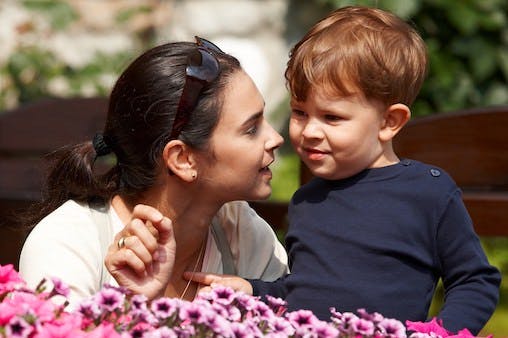Why Children ask “Why”

Question
My three-year-old keeps asking me "why?" about everything. Why is the sky blue? Why are there clouds? Why can't I go outdide? Why do I have to be nice? Sometimes it doesn't seem to matter what the answer is, he's never satisfied. And I m exasperated. How do I handle his questions?
Palo Alto, California
Dr. Greene's Answer
You’ve asked a question I’ve heard over and over from parents all around the world. We love to hear the quaint expressions our kids come up with as their language skills blossom, but sometimes their insistent questions seem a bit like the drip, drip, drip of an ancient water torture.
We’re frustrated for two reasons. Often we don’t know the real answers to the innocent questions they ask, but even when we do, our answers don’t slow the pace of their relentless questions. That’s because we’ve misunderstood their language and think that when they ask “why?” they mean the same thing we mean when we ask why. Our cause-and-effect answers miss the mark, and so they fail to satisfy. I’ll give you the key to unlock their language so you can answer the real question behind their many, many “whys.” Then both of you can revel in the joy of your communication.
When your son was born, his only method of communication was to cry. He used the same sound to mean, “I’m hungry,” “I’m bored,” “This diaper’s on too tight,” “My tummy really, really hurts!” “I miss you, mommy!!” and the myriad of other things he was experiencing, feeling, and thinking. An amazing thing happened — you began to intuitively know what his cries meant, and he began to use slightly different cries to express different needs and desires. Your dance was clumsy at first, but in a brief time the two of you developed your very own language, gliding across the verbal dance floor with style and grace.
When children begin to learn real words, the words usually don’t correspond exactly to the way adults use them. Often a specific word is used to indicate an entire category or visa versa. “Dog” might mean any animal, while “meow” might mean “cat” — but only one cat. These early discrepancies are cute and obvious — and should be caught on videotape if at all possible. But by the time children are able to speak in sentences, it sounds deceptively like they mean the same thing we do. This happens at about the same time their curiosity, imagination, and creativity skyrocket.
They begin to ask, “Why?” “Why?!?!” “WHY, Mommy, WHYYYYY?”
I’ve found that, when I try to answer children at this stage of development with the reason for something, they are left cold. After conversing with thousands of children, I’ve decided that what they really mean is, “That’s interesting to me. Let’s talk about that together. Tell me more, please?”
When I’ve connected with children and begun to spin a tale to answer this question, they’ve sat enthralled. There was no need to mention because, or therefore, or cause, or effect. They don’t need to know why, all they need is animated attention and me saying whatever came to mind about that subject. After a brief interchange, we were both happy. Let me give you an example.
I remember when one of my own sons asked me why the sky was blue. I told him that on sunny days the sky was blue and that on cloudy days it was gray and that at night it was very, very dark. Sometimes between day and night, it’s a pretty pink or orange. And there are cool things in the sky. The sun gives us heat and light. It’s like the stars, only closer. There are planets that go around the sun, and we live on one of them, called Earth.
Notice that I didn’t at all answer why the sky is blue, but I did connect with him and answer his real question. He was delighted with our interchange and I got an enthusiastic “cool,” not another automatic “why?” We both won.
When babies cry, they are not just asking for food or a new wardrobe. They are asking for you! Our young scholars are curious and eager to explore the world, but they are still asking for you. They want to explore this fascinating world with the people they feel the safest around and love the most.
This communication dance doesn’t end with the “why” phase of development. As children grow, their communication skills become more refined, and it is often more difficult to hear the “That’s interesting to me. Let’s talk about that together,” underneath the surface. As we look for the invitation into our children’s lives and relate to them at their level of interest, we’ll find countless opportunities to engage with them. This communication dance is not an easy one. Every time we learn the steps, they seem to develop a new set of moves. So, what does “Mom, can I borrow the keys to the car?” really mean? :-)


